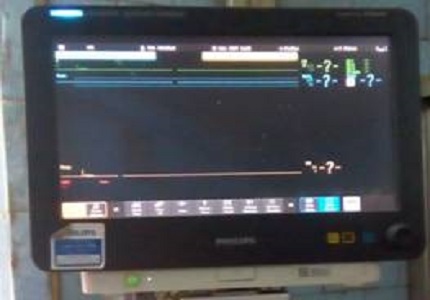Unusual near- miss case of atonic postpartum haemorrhage in GMC Chandrapur (Dawn from death to life)
Abstract
A maternal near- miss is an event in which a pregnant woman comes close to maternal death, but does not die. A 8 months gestation third gravida patient was admitted in GMC Chandrapur in preterm labor with intrauterine death. It was an uneventful delivery and as she was a high risk patient for postpartum hemorrhage, all preventive measures were taken. Unfortunately she landed up in atonic PPH for which her subtotal obstetric hysterectomy was done but within one hour she landed up in cardiac arrest, was revived with CPR and her internal iliac artery ligation was done. Postoperative course was uneventful and she was discharged on 10th postoperative day. The aim of this report is to stress the need for strict vigilance of PPH and cardiac arrest and prompt intervention involving multidisciplinary team which led to salvaging the precious life of a mother.
Downloads
References
Pattinson R, Say L, Souza JP, Broek Nv, Rooney C; WHO Working Group on Maternal Mortality and Morbidity Classifications. WHO maternal death and near-miss classifications. Bull World Health Organ. 2009 Oct;87(10):734.
Say L,Souza JP,Pattinson RC.WHO working group on Maternal Mortality and Morbidity classifications.Maternal near miss-towards a standard tool for monitoring quality of maternal health care.Best Pract Res Clin Obstet Gynaecol.2009;23(3):287-96.
Rossi AC, Lee RH, Chmait RH. Emergency postpartum hysterectomy for uncontrolled postpartum bleeding: a systematic review. Obstet Gynecol. 2010 Mar;115(3):637-44. doi: https://doi.org/10.1097/AOG.0b013e3181cfc007.
Mousa HA, Alfirevic Z. Treatment for primary postpartum haemorrhage. Cochrane Database Syst Rev. 2003;(1):CD003249.
Cardiac Arrest Associated With Pregnancy.Circulation2005;112;150-53.
MorrisS,StaceyM.Resuscitation in pregnancy.Br Med J 2003 Nov 29;327(7426):1277-92.
American Heart Association.ACLS Provider Manual and BLS Manual, 2001.
Whitty JE. Maternal cardiac arrest in pregnancy. Clin Obstet Gynecol. 2002 Jun;45(2):377-92.
Nizard J,BarrinqueL,Frydman Fernandez H.Fertility and pregnancy outcomes following hypogastric artery ligation for severe post –partum haemorrhage.Hum Reprod.2003;18:844.
Khan KS, Wojdyla D, Say L, Gülmezoglu AM, Van Look PF. WHO analysis of causes of maternal death: a systematic review. Lancet. 2006 Apr 1;367(9516):1066-74.
Walraven G, Telfer M, Rowley J, Ronsmans C. Maternal mortality in rural Gambia: levels, causes and contributing factors. Bull World Health Organ. 2000;78(5):603-13.
World Health Organisation.Evaluating the Quality of Care for Severe Pregnancy Complications:The WHO Near-Miss Approach for Maternal Health.Geneva,Switzerland:World Health Organization;2011.
https://en.wikipedia.org/wiki/Maternal_near_miss
Pragti Chhabra. Maternal Near Miss: An Indicator for Maternal Health and Maternal Care. Indian J Community Med. 2014 Jul-Sep; 39(3): 132–137. doi: https://dx.doi.org/10.4103%2F0970-0218.137145.
Taly A, Gupta S, Jain N. Maternal intensive care & Near miss mortality in Obstetrics. Obstet Gynaecol India 2004;54:47-2.
Mantel GD, Buchmann E, Rees H, Pattinson RC. Severe acute maternal morbidity: a pilot study of a definition for a near-miss. Br J Obstet Gynaecol. 1998 Sep;105(9):985-90.
Filippi V, Brugha R, Browne E, Gohou V, Bacci A, De Brouwere V, Sahel A, Goufodji S, Alihonou E, Ronsmans C. Obstetric audit in resource-poor settings: lessons from a multi-country project auditing 'near miss' obstetrical emergencies. Health Policy Plan. 2004 Jan;19(1):57-66.



 OAI - Open Archives Initiative
OAI - Open Archives Initiative


